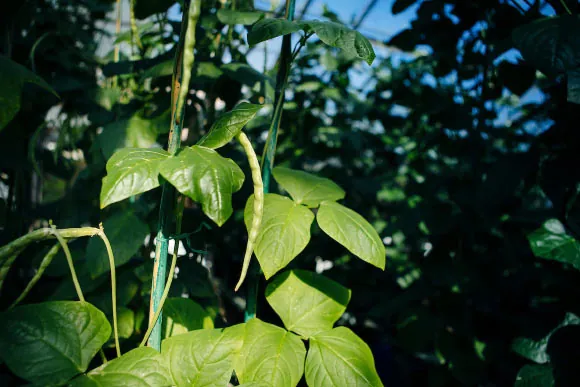
Revolutionary Discovery: How Plants Master Heat Detection in Daylight!
2025-07-01
Author: John Tan
The Secret Life of Plants: Heat Sensing Unveiled!
In groundbreaking research at the University of California, Riverside, Professor Meng Chen and his team have uncovered a surprising truth about how plants detect heat during the day. Unlike traditional beliefs held by scientists for decades, plants don't just rely on proteins like phytochrome B and ELF3; they have a hidden sugar-based system that plays a pivotal role!
Why Daytime Matters: A New Perspective
Textbooks have long pointed to phytochrome B and ELF3 as the primary heat detectors in plants, but those theories were primarily based on nighttime studies. Professor Chen's team aimed to shine a light on what's really happening during the day when both sunlight and heat peak—the conditions most plants actually encounter.
Experimenting with Nature: The Heart of the Research
Using Arabidopsis, a small flowering plant commonly used in genetics, the researchers exposed seedlings to varying temperatures from 12 to 27 degrees Celsius under different lighting. They closely monitored the growth of the seedlings, measuring their hypocotyls, or stem lengths, which indicate their response to warmth.
Astonishing Findings: The Role of Sugar!
What they discovered was astonishing: phytochrome B could sense heat only in low light conditions. Under bright light, it shut down its temperature-sensing capabilities. Yet, the plants continued to grow taller even without the thermosensing function of phytochrome B, leading researchers to deduce the existence of alternative sensors.
The Sugar Connection: A Game Changer!
Delving deeper, they found that mutants of phytochrome B responded to warmth only in light. When deprived of photosynthesis in the dark, these plants failed to grow tall. However, introducing sugar back into their environment reignited their response to temperature. This revelation suggested that sugar was more than just an energy source—it acted as a crucial signal indicating warmth!
The Nuances of Plant Intelligence
Further experiments revealed that warming temperatures triggered starch breakdown in leaves, releasing sucrose. This sugar stabilized the crucial protein PIF4, a major growth regulator, without which PIF4 would degrade. As temperatures rose, sucrose allowed PIF4 to thrive, but it needed the cooperation of another sensor, ELF3, to become fully active.
Implications for the Future: Breeding Resilient Crops
The study highlights a complex, multi-layered system where plants use sugar not just for energy but also as a response mechanism to environmental changes. With climate change leading to extreme temperatures, understanding this mechanism could pave the way for breeding crops that endure stress better and grow predictably.
A New Era of Plant Thermosensing!
Professor Chen aptly sums it up: "This research reshapes our understanding of thermosensing in plants. It’s not merely about proteins activating; it’s about the intricate interplay of energy, light, and sugar. The quiet sophistication of plants is filled with hidden intelligence that knows precisely when to stretch toward the sky!"




 Brasil (PT)
Brasil (PT)
 Canada (EN)
Canada (EN)
 Chile (ES)
Chile (ES)
 Česko (CS)
Česko (CS)
 대한민국 (KO)
대한민국 (KO)
 España (ES)
España (ES)
 France (FR)
France (FR)
 Hong Kong (EN)
Hong Kong (EN)
 Italia (IT)
Italia (IT)
 日本 (JA)
日本 (JA)
 Magyarország (HU)
Magyarország (HU)
 Norge (NO)
Norge (NO)
 Polska (PL)
Polska (PL)
 Schweiz (DE)
Schweiz (DE)
 Singapore (EN)
Singapore (EN)
 Sverige (SV)
Sverige (SV)
 Suomi (FI)
Suomi (FI)
 Türkiye (TR)
Türkiye (TR)
 الإمارات العربية المتحدة (AR)
الإمارات العربية المتحدة (AR)